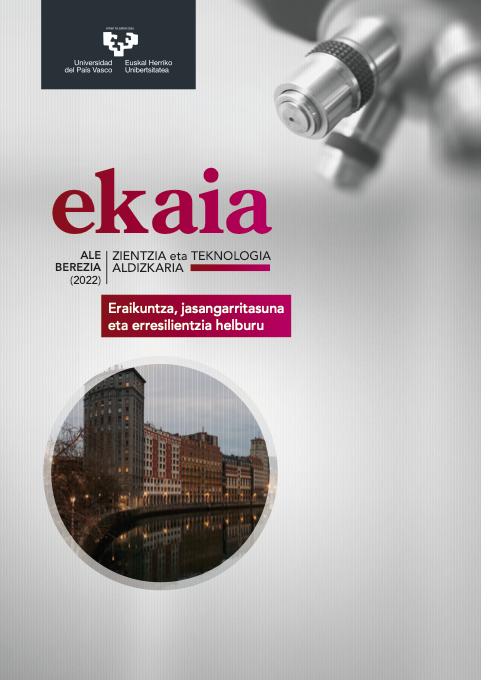Harea berdeen erabilera morteroen eroankortasun termikoa aldatzeko
##plugins.themes.bootstrap3.article.main##
##plugins.themes.bootstrap3.article.sidebar##
Javier Canales
Jesús Cuadrado
Laburpena
Eraikuntza-sektorean hormigoiak eta morteroak dira gehien erabiltzen diren eraikuntza-materialak, eta lehengai natural asko kontsumitzen dituzte, beren osagai nagusiak (harea eta zementua) harrobietatik lortutako harri naturalak tratatuz lortu behar baitira. Baliabide naturalen erabilera murrizteko helburuarekin, morteroetan galdaketako harea birziklatua erabiltzeak propietate fisiko, termiko eta mekanikoetan duen eragina aztertzen da artikulu honetan. Morteroetan normalean erabiltzen den kareharri-harearen ordez, galdaketako harea berdea erabili da, hainbat ehunekotan (% 0, % 25, % 50, % 75 eta % 100), eta mortero gogortuen porositatea, ultrasoinuen hedapen abiadura, eroankortasun termikoa, bero espezifiko bolumetrikoa, eta makurdura- eta konpresio-erresistentziak neurtu dira. Emaitzak aztertuta, argi dago galdaketako harea berdeak duen bentonita-edukiaren eragina: ur gehiago behar duenez, handitu egiten du porositatea, eta murriztu egiten ditu eroankortasun termikoa, bero espezifiko bolumetrikoa eta erresistentzia. Hala ere, galdaketako harea berdearen erabilera bideragarria litzateke exijitu beharreko erresistentzia mekanikoa baxua denean eta morteroaren eroankortasun termikoa murriztea interesgarria denean. Adibidez, zolatu eta estalkietan erabil liteke, nibelatze-kapa moduan.
##plugins.themes.bootstrap3.article.details##

This work is licensed under a Creative Commons Attribution-ShareAlike 4.0 International License.


 https://orcid.org/0000-0002-7568-0456
https://orcid.org/0000-0002-7568-0456